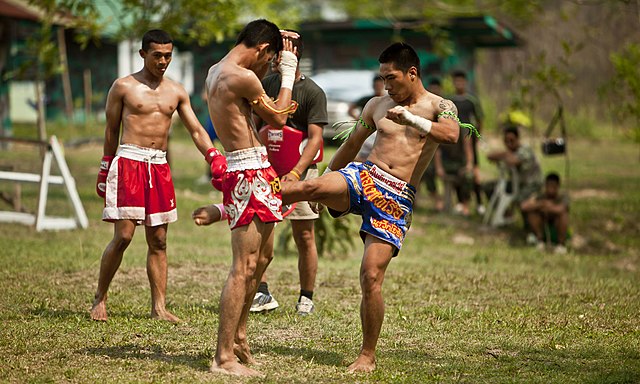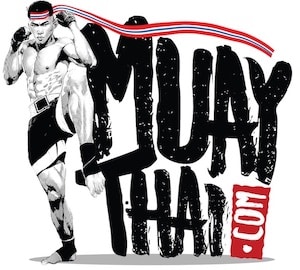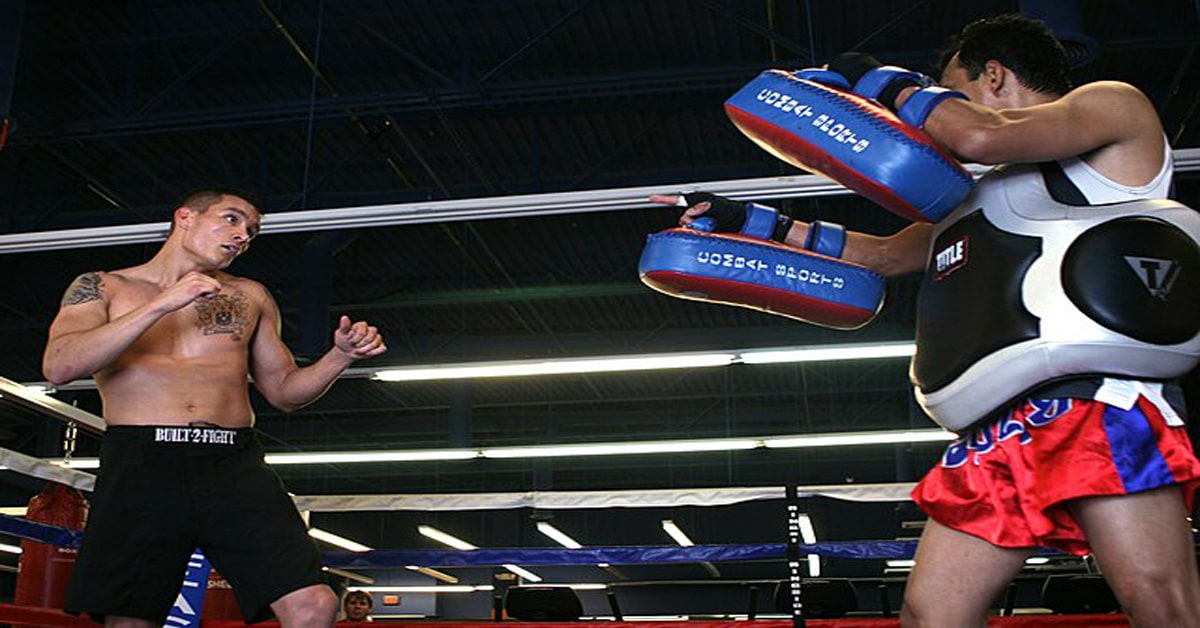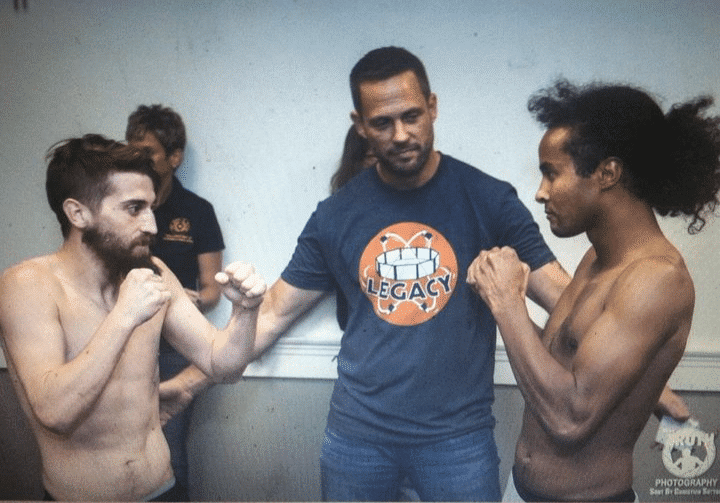Muay Thai Drills: Explained
Muay Thai training is among the hardest types of training or any combat sport. Fighters go through countless rounds of Muay Thai drills they go through with during training.
Here is a breakdown of the Muay Thai drills that Thai boxers practiced during training. Detailing all of the types of Muay Thai drills with examples presented.
What are Muay Thai Drills?
Muay Thai drills are the specific training that Muay Thai fighters undergo during their training sessions. During thousands of repetitions of each movement in order to improve their technique and conditioning simultaneously.
Thai boxers will do different Muay Thai drills in multiple sessions throughout the day. Preparing themselves to be in their best condition on fight night.

How Many Muay Thai Drills Exist?
Countless Muay Thai drills are used in training throughout the world, with new ones constantly being created. There are around twenty types of Muay Thai drills that are practiced in Thai boxing training.
- Shadow Boxing
- Jump Rope
- Pad Work
- Bag Drills
- Sparring
- Clinch Work
- Kicking Drills
- Elbow Drills
- Knee Drills
- Defensive Drills
- Balance & Coordination Drills
- Reaction Drills
- Strength & Conditioning Drills
- Footwork Drills
- Partner Drills
- Bag Clinching
- Combination Drills
- Stretching(Pre & Post Workout)
Pro Muay Thai fighters will do a combination of any of these drills at any given training session.

The Types of Muay Thai Drills
Here’s a breakdown of all the types of Muay Thai drills with videos attached.
Shadowboxing
Shadowboxing is one of the most widely used Muay Thai drills in the same way it’s used in boxing. The Muay Thai version of shadowboxing, of course, includes kicks, knees, and elbows, along with the punching.
Like boxing, shadowboxing in Muay Thai is used as a warmup for the fighters. Moving around the ring and getting warmed up mimics the movement of a fight.
Generally, doing numerous rounds of shadowboxing to get their heart rate up and visualize landing the strikes in a fight. Many trainers will make their fighters do specific shadowboxing Muay Thai drills to focus on specific techniques and defenses.
Jump Rope
Jump rope is another pre-training workout that Muay Thai took from boxing. All of the best Muay Thai fighters put in rounds of jumping rope during a training session. Trainers will often create Muay Thai drills to incorporate into their fighter’s rounds of jump rope.
Thai boxers will also do many of the same drills that boxers do while jump roping.
Pad Work
Pad work is one of the main aspects of Muay Thai training. Fighters will go through hours of pad work in preparation for a fight.
The point of pad work is to mimic the movement of a fight while allowing the fighters to throw techniques at 100%. This allows the trainers to improve their cardio while also improving their technique.
Pad holders will also put fighters through specific Muay Thai drills while they’re going to bag work. It could be anything from practicing a certain combo or blasting off as many strikes as possible.
Bag Drills
Bag drills are a huge part of Thai boxing training, and numerous Muay Thai drills are performed on the bag. If you don’t see a fighter hitting pads or sparring, they will be hitting the heavy bag.
While doing bag drills, the fighters improve their cardio, strength, and technique.
If you ever take up Muay Thai training, you will be spending hours doing bag drills.
Sparring
Like in any other striking martial art, sparring has always been done in Muay Thai. However, there are a few different types of sparring. There’s the type of training the Thai boxers do, and then there’s 100% full-contact sparring.
The Thai style of sparring is more of a technical style of sparring. They move fast but throw strikes at less than 50% strength.
This type of strike is popular in Thailand because it allows fighters to speed up a fight without getting hurt. Thai fighters prefer this style because they fight every 4-8 weeks and must not get injured.
Then the other type of sparring is more for the hardcore crazy fighters like champion boxer James Toney preferred. Going full speed and hitting your sparring partner as hard as you can.
Partner Drills
Like every martial art and combat sport, partner drills are used in Thai boxing training. These are collaborative drills done with a training partner to practice specific techniques and scenarios. All of the Muay Thai drills they do depend on who they are fighting and preparing for them.
Clinch Work
Just like in wrestling, many Muay Thai drills specifically focus on clinching. A lot of the battles in Muay Thai happen in the clinch, so Thai boxers must constantly do clinch drilling.
When doing clinch work, two fighters will either practice specific clinching techniques or go through rounds of clinch wrestling. Without strikes or gloves, the fighters will fight to control the Muay Thai clinch and try to throw their sparring partners.
Kick Drills
There’s a wide variety of kicks in Thai boxing, and there are numerous Muay Thai drills to practice those kicks. Kicking drills in Thai boxing can be done everywhere, from on the pads, bag, or with a partner.
Knee Drills
Just like with the kicks, a fighter does numerous Muay Thai drills to improve their knee strikes. The knee drills performed are either to improve power, speed, and technique or do all three.
They learn to deliver a precise and powerful knee everywhere, from on the bag, on mitts, or with a training partner.
Defensive Drills
People always talk about the offensive Muay Thai drills but never about the defensive drills. There are a lot of important defensive drills that Thai boxers do during their training.
For example, they will do sparring rounds, where they’re only playing defense or do technical training with a partner.
Balance & Coordination Drills
If a fighter wants to throw the most technical and powerful strikes, they must do balance and coordination drills. Without balance and coordination, a fighter will never come close to perfecting the technique.
One popular balance and coordination drill is holding and moving a fighter’s leg around the fight. Doing this improves their balance and coordination.
Reaction Drills
In Muay Thai, it’s all about how a fight reacts to their opponent. That’s why fighters do hours of reaction drills with their coaches and training partners.
For example, a common counter to a leg kick is a 1-2 punch combo. Anytime you check a leg kick, you answer with a two-punch combo.
There are nearly infinite types of reaction Muay Thai drills that you could come up with to practice.
Strength & Conditioning Drills
Thai boxers are some of the world’s most well-conditioned combat sports athletes. Traditionally, Thai boxers have a bare-boned approach to strength and conditioning drills.
Relying on the classic fighting conditioning that’s traditionally been done by fighters. What their usual do consists of:
- Running
- Pushups
- Abs
- Squats
- Neck Exercises
- Dumbbell Exercises
Any fight gym will make their fighters go through numerous Muay Thai drills that consist of those movements.
Footwork Drills
The importance of footwork is equally important in Muay Thai as it is in boxing. Fighters must go through various Muay Thai footwork drills during the conditioning routines.
They will do many of the same footwork drills that boxers go through using an agility ladder or doing ring movements.
Bag & Pad Clinching
Fighters don’t just practice their clinch work with a training partner. They also practice their clinch techniques on both a bag and pads.
The reason for practicing their clinching on the bad pads is to allow fighters to throw strikes at full force.
Combination Drills
Numerous combination Muay Thai drills are practiced during a fighter’s training. It could be anything from punch to kick drills, knee to elbow or whatever you can think of.
These drills aim to either work on technique, improve their speed, condition their muscles, or all three. Most of your Muay Thai training sessions would be performing combination drills.
Stretching(Pre & Post)
Thai boxers are methodical about their stretching. They will go through pre-training and post-training routines during their training.
Once they get done with their warm-up, they will stretch their legs and arms to prepare for fight training. Then after they’ve completed training, they will go through another routine to cool their muscles down.
Some gyms will even have masseuses present to massage the fighters after training. This is to limit their muscle soreness and help them recover before their next training session.


